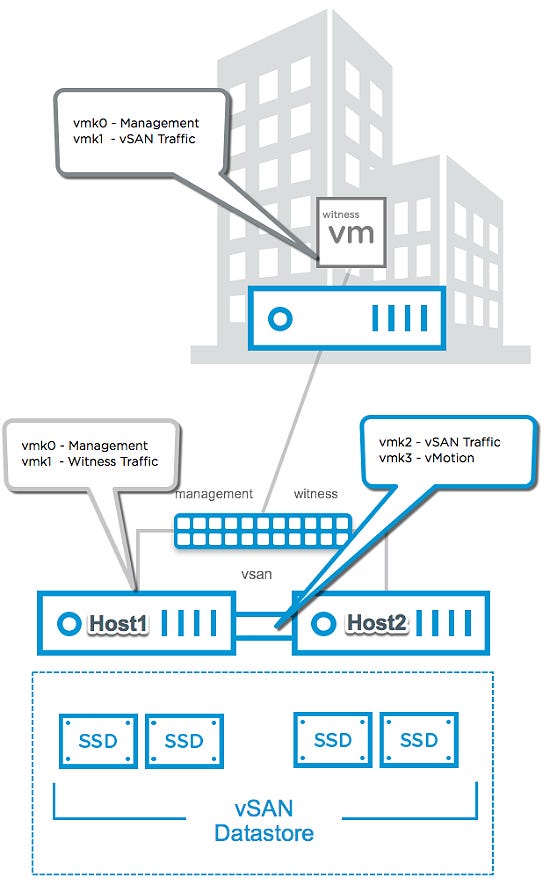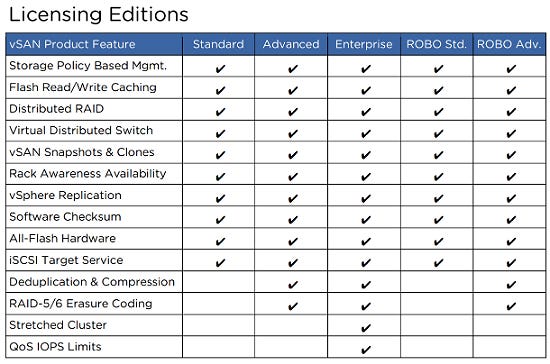VMware vSAN 6.6 Eases Hyperconverged Storage Adoption
Twenty-five-plus new features will help partners move customers into all-flash, software-defined future.
April 11, 2017

 By Kurt Marko
By Kurt Marko
The enterprise storage market is at a technological tipping point. Entrenched centralized architectures based on massive storage arrays and dedicated SANs are giving way to distributed virtual servers hosting pools of software-defined storage. Tomorrow’s storage array will more likely be a hyperconverged host running a mix of VM workloads and a storage stack versus a monolithic storage chassis. Indeed, one analyst’s assessment of the storage market shows HCI revenue growing faster than any other storage segment over the next decade, while Gartner expects software-defined storage on HCI systems to comprise 30 percent of enterprise capacity by 2019.
As the leading purveyor of enterprise virtual infrastructure, VMware is keenly aware of both the revenue opportunities and the risks should it fumble the storage technology transition. As such, vSAN is critical to the company’s future and that of its close corporate cousins at Dell-EMC; that makes this week’s announcement of the biggest set of feature enhancements in vSAN history a high-stakes one for the company and its partners.
The new vSAN 6.6, arriving midway between VMworld events and on pace to meet the product’s historical semi-annual release schedule, includes at least 25 new features targeting three categories: data security, performance and TCO. Michael Haag, VMware’s group manager for vSAN product marketing, says that the priorities result from larger trends affecting customers — namely, the pace of new IT projects supporting digital business, tight IT budgets with ongoing caps on growth and the continued onslaught of technology, particularly high-density servers like those used in HCI, flash memory and new storage components like 3D Xpoint used in Intel Optane. Haag insists that not only are customers expanding their use of HCI storage, like vSAN, from test and development to mainstream business applications, they like the ease with which HCI can be expanded and updated to rapidly take advantage of both new server and storage products.{ad}
Feature Highlights
Given the borderline security paranoia in many customer IT shops, it’s not surprising that VMware leads with vSAN’s new features that address both data privacy and dependability. Version 6.6 adds software-based encryption that exploits the hypervisor-based crypto module added to vSphere 6.5 last fall to perform data encryption across a storage cluster, regardless of the storage devices in use. By working within the VM platform and storage stack, vSAN’s encryption can exploit crypto optimizations built into current Broadwell Xeon processors to accelerate Intel AES New Instructions.
Cluster-integrated crypto also allows vSAN to more easily integrate new storage devices, like Optane, into an encrypted volume without requiring on-drive crypto features.
Version 6.6 also improves vSAN stretched clusters by adding dual-layer protection, in which data is both RAID-1 replicated across sites and RAID-1, 5, or 6 striped across nodes within a site. Thus, even if a remote site should go down, data stored locally is …
{vpipagebreak}
… still protected. Recall that vSAN 6.5 added 2-node direct connect for clusters, which requires only a remote virtual witness server, a scenario tailor-made for ROBO installations of the many partners deploy and manage. With new dual-layer redundancy, ROBO clusters, like those at retail sites with limited IT expertise, can achieve even higher reliability.

Like most storage products, vSAN has fully embraced all-flash arrays, courtesy of several product additions, including support for NVMe, nearline deduplication and compression, and erasure coding, over the past few generations. In 6.6, VMware claims new performance optimizations improve IOPS by up to 50 percent. The new release also supports larger caching devices, such as new 1.6 TB flash drives, and is ready for innovative additions like Optane NVMe drives, which VMware claims can improve sequential read-write performance by 2.5 times when used as a caching device.{ad}
A major draw for HCI is ease of deployment and management, and here vSAN 6.6 adds several features that VMware says may reduce IT operational costs by up to 80 percent. For example, 6.6 sports software wizards that allow new deployments or …
{vpipagebreak}
… upgrading of vSAN disk controllers and drivers via a simple GUI. The new release also delivers improvements to vSAN Health Services that provide automated checks of system configuration and well-being. These checks can be fed into a new vSAN Cloud Analytics service that continuously monitors vSAN operations and provides alerts and recommendations for IT admins.
What’s Here for VMware’s Channel?
Partners will appreciate that VMware is simplifying software licensing by introducing four vSphere-vSAN bundles, two each for data center and ROBO deployments. In the data center, buyers can choose from either an advanced kit that includes vSphere Enterprise+ and vSAN advanced or an enterprise SKU that includes all the goodies by combining vSphere Operations Management and vSAN enterprise.{ad}
On the remote office side, a standard bundle combines the standard ROBO editions of vSphere and vSAN, while an advanced package ups the storage features by pairing vSAN ROBO advanced with standard vSphere ROBO. The feature checklist for each vSAN edition is detailed in this white paper and summarized below //license graphic//. The primary difference between data center and ROBO editions is the licensing model: The former prices both vSphere and vSAN per CPU socket, while ROBO products are priced by the number of active VMs, typically starting with 25-VM packs.

With vSAN supporting dozens of products from at least 10 server manufacturers (see the latest list here), these product bundles enable partners to quickly build HCI systems that combine VM workloads and SDS using hardware vendors they already work with.
Improvements to vSAN installation and upgrade tools along with the new cloud monitoring service should reduce the time partners spend both on initial deployment and ongoing system management — a big win. Likewise, new crypto and cluster reliability features allow partners to use HCI with more customers, such as government agencies, financial services, health care and organizations needing high data availability and security for remote users.
Follow independent technology analyst, consultant and writer @krmarko on Twitter.
Read more about:
AgentsAbout the Author(s)
You May Also Like


